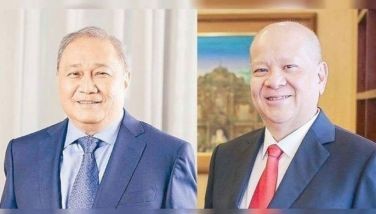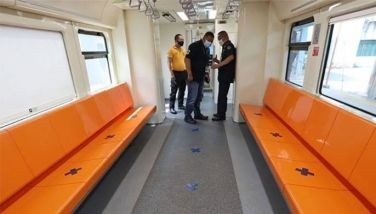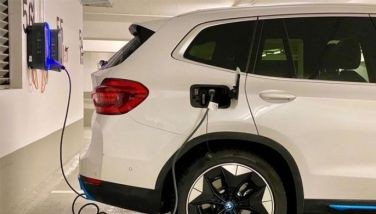We’re losing private schools

More and more private schools are closing because of financial pressures, and it is happening at a time when international test results are showing our young people are at the bottom of a list of peers from other countries in competency in basic subjects like math, reading, and science.
A quarter-million students moved from private to public schools in 2020 and 2021, according to the DepEd. Parents are shifting their children for economic reasons. Times are hard and public schools don’t charge tuition fees.
Also, there is an exodus of private school teachers to public schools where the pay is higher by as much as triple what is offered by small private schools. Big private schools offer an average monthly salary of P18,000, while the smaller ones pay as little as P8,000 to P12,000, compared with a P25,000 starting salary offered by government schools.
Loss of students and teachers forced many private schools to close. On the other hand, public schools are overcrowded and can hardly keep up with the increased enrollment. Stop gap measures have been adopted like DepEd offering vouchers to private school transferees to go back to their private schools. But often, the value of the vouchers is much less than the tuition fee required.
Is the loss of private schools something to worry about? Can public schools provide quality education?
A PIDS paper says private schools are performing better than expected compared to public schools (Orbeta Jr. and Paqueo, 2022).
Since the performance of the private school sector is somewhat better, logic suggests that DepEd should consider a regular program giving vouchers to study in private schools at a predetermined tuition rate, a form of public private partnership. The really good students who will otherwise be stymied by the public school system should be given full scholarships in a top private school so they can blossom and use their education as a ticket out of poverty.
It is not that the government cannot provide quality education. The Philippine Science High School System shows that when properly funded and managed, top-notch education can be given by the state. The University of the Philippines is another example of good quality public education. The K-12 program of the UP Integrated School, as well as that of the UP Rural High School in Los Baños, are among the best.
But in mass education where over 90 percent of Filipino children learn their basics, it is a sad story for the longest time. It is not enough to throw more money at the problem in the hope of fixing it. For instance, salaries of teachers have been upgraded to exceed private sector levels. The classroom shortage was addressed by the PNoy administration, but has deteriorated again.
This is where private schools had been helping out through the years. Catholic parochial schools have been providing quality and affordable education. I, for instance, had my elementary education at Paco Catholic School. In my time, it was run by Belgian nuns, the same nuns running the more expensive St Theresa’s College. The tuition at Paco Catholic was affordable and payable in installments.
However, economics is killing many private schools. Up to 425 private elementary and high schools nationwide have closed since 2020. DepEd spokesman Michael Poa has been quoted in published reports as saying the closure of schools in the past two years affected 20,838 students. He said around 10,000 of the students transferred to public schools. These figures probably undercount and must be updated.
A World Bank report revealed that case studies comparing private and public secondary education in Colombia, the Dominican Republic, the Philippines, Tanzania, and Thailand, show private school students generally outperform public school students on standardized math and language tests. This finding holds even after holding constant for the fact that, on average, private school students in these countries come from more advantaged backgrounds than their public school counterparts.
In October last year, BusinessWorld reported that University of the Philippines Diliman College of Education Dean Jerome Buenviaje said the government should save private schools from collapse because they play a vital role in the country’s education system.
Dean Buenviaje said the figures show that the quality of graduates joining the Philippine labor force is highly dependent on the private school sector. Mr. Buenviaje is effectively saying the closure of private schools means fewer graduates that private sector employers could hire. “If this trend goes on, the government would have to establish more schools or further strengthen their existing programs, which would mean additional funding.”
What can be done? Private school teachers’ salaries could be increased through wage subsidies given by the government to private schools. Current tax relief for private schools is not enough. Private schools are eligible for a temporary one percent tax from July 2020 to June 2023, after which the rate will go back to 10 percent. Maybe grant tax free status for schools offering K-12 that pass performance standards because they are helping the government provide an essential service that the government must spend for anyway.
More students going to private schools also means the government will not have to build additional classrooms, and can also help in decongesting public schools. The government and the private education sector must work together to help the country address learning poverty.
Learning poverty is a crisis in education that is scary… our young people can’t read enough to save their lives, such as reading the label of a medicine bottle. Our learning poverty or the ability of a child at late primary age to read and understand a simple text is at 90.9 percent, higher than all our ASEAN neighbors, with the exception of Lao PDR (97.7 percent). Indonesia, with more than double the Philippines’ population, scored better at 52.8 percent.
A 90 percent learning poverty is a crisis. The economic future of the country is doomed unless we are able to reverse this learning poverty level. That it exists should give our public officials sleepless nights, assuming they are serious about getting their mandates accomplished.
The current Secretary of Education, who wants to be president, must prove she is up to the challenge of fixing this education crisis. So far, we haven’t seen anything yet beyond mandatory ROTC.
Boo Chanco’s email address is [email protected]. Follow him on Twitter @boochanco
- Latest
- Trending

























